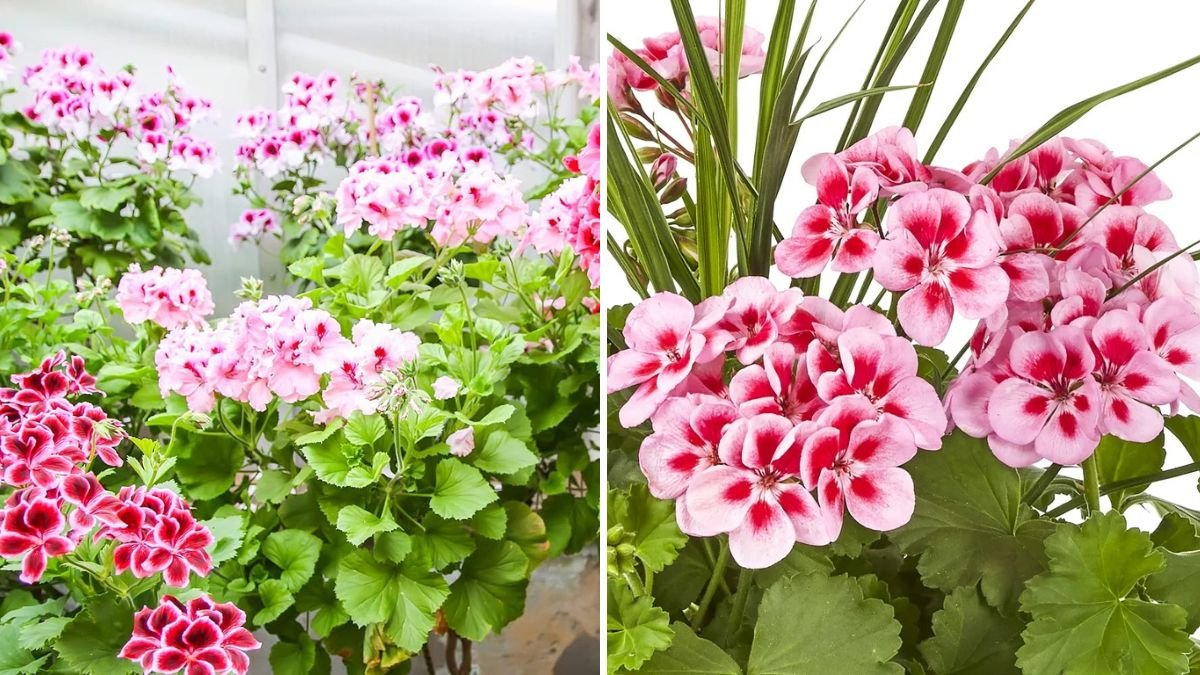Geraniums are among the most beloved garden flowers, cherished for their vivid blooms, fragrant foliage, and versatile growth. From sunny garden beds to container displays, these resilient plants bring color and charm to outdoor spaces. However, one challenge gardeners face is keeping geraniums healthy and flowering during hot summer months. Without the right watering strategy, even the hardiest geraniums can wilt, develop leaf scorch, or suffer from root stress.
The secret to thriving geraniums in heat lies not in frequent watering, but in smart, strategic watering techniques that ensure optimal soil moisture, strong root development, and prolonged blooms. This guide explores the watering trick that keeps geraniums thriving in heat, along with additional tips for maintaining vibrant, heat-tolerant plants.
1. Understanding Geranium Water Needs
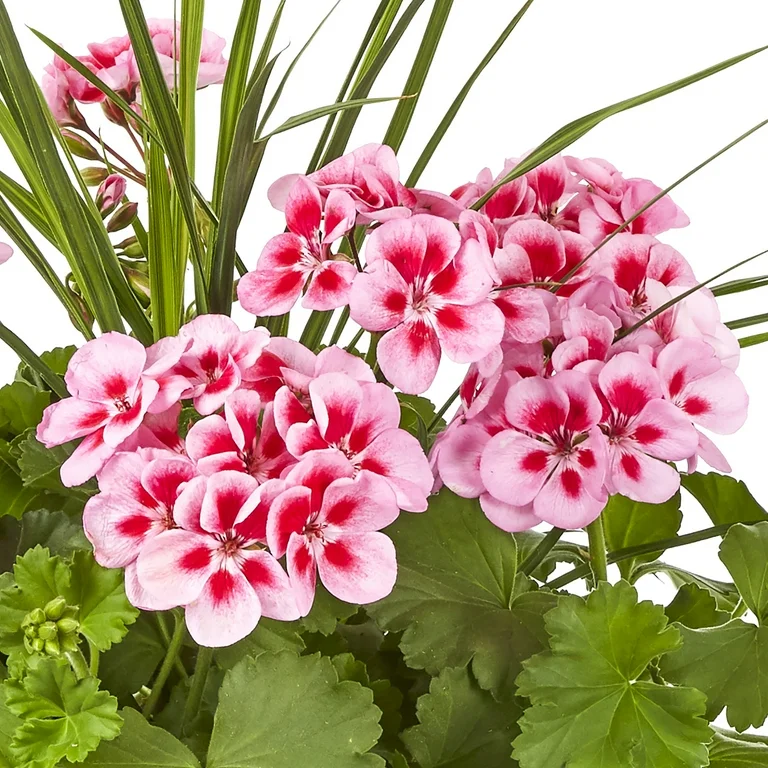
Geraniums (Pelargoniums) are drought-tolerant plants, but they still require consistent moisture to produce vibrant flowers. The key is knowing the plant’s specific water requirements:
- Roots: Geraniums have moderately deep roots that prefer moist but well-drained soil.
- Leaves: Overwatering can lead to yellowing leaves and fungal issues, while underwatering causes wilting and stunted growth.
- Blooms: Adequate water is critical during flowering; insufficient moisture reduces flower size and longevity.
Tip: The goal is to provide deep, infrequent watering rather than shallow, frequent sprinkling.
2. The Watering Trick: Deep, Morning Watering
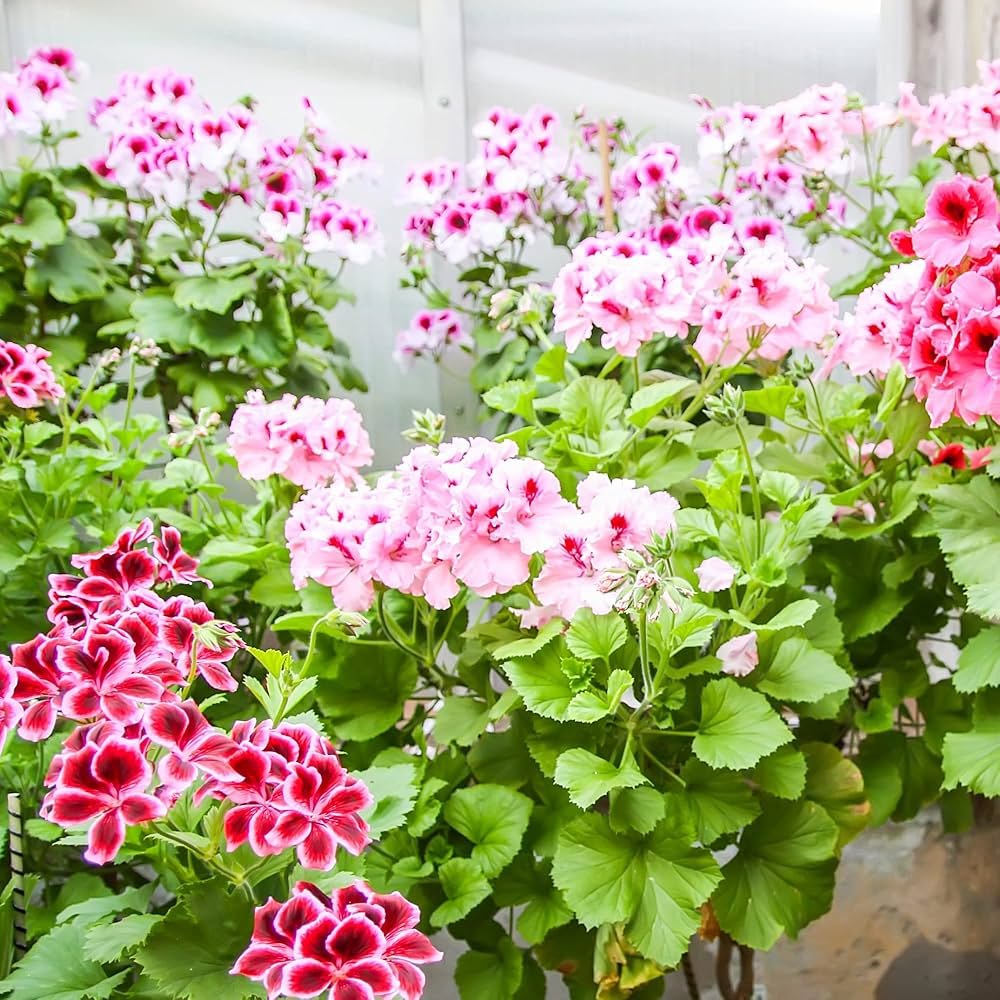
The most effective trick to keeping geraniums thriving in hot weather is deep watering in the morning. This approach ensures roots receive adequate moisture while reducing the risk of disease.
Why Deep Watering Works
- Encourages roots to grow deeper, making plants more resilient to heat stress.
- Reduces water evaporation from the soil surface.
- Ensures moisture reaches the entire root zone, preventing uneven hydration.
Why Morning Watering Is Best
- Water applied early in the day has time to soak into the soil before the sun evaporates it.
- Leaves dry during the day, reducing the risk of fungal infections and leaf scorch.
- Plants are hydrated before peak daytime heat, improving photosynthesis and bloom quality.
Tip: Avoid watering in the late afternoon or evening, as prolonged leaf moisture can promote powdery mildew and other fungal diseases.
3. Checking Soil Moisture
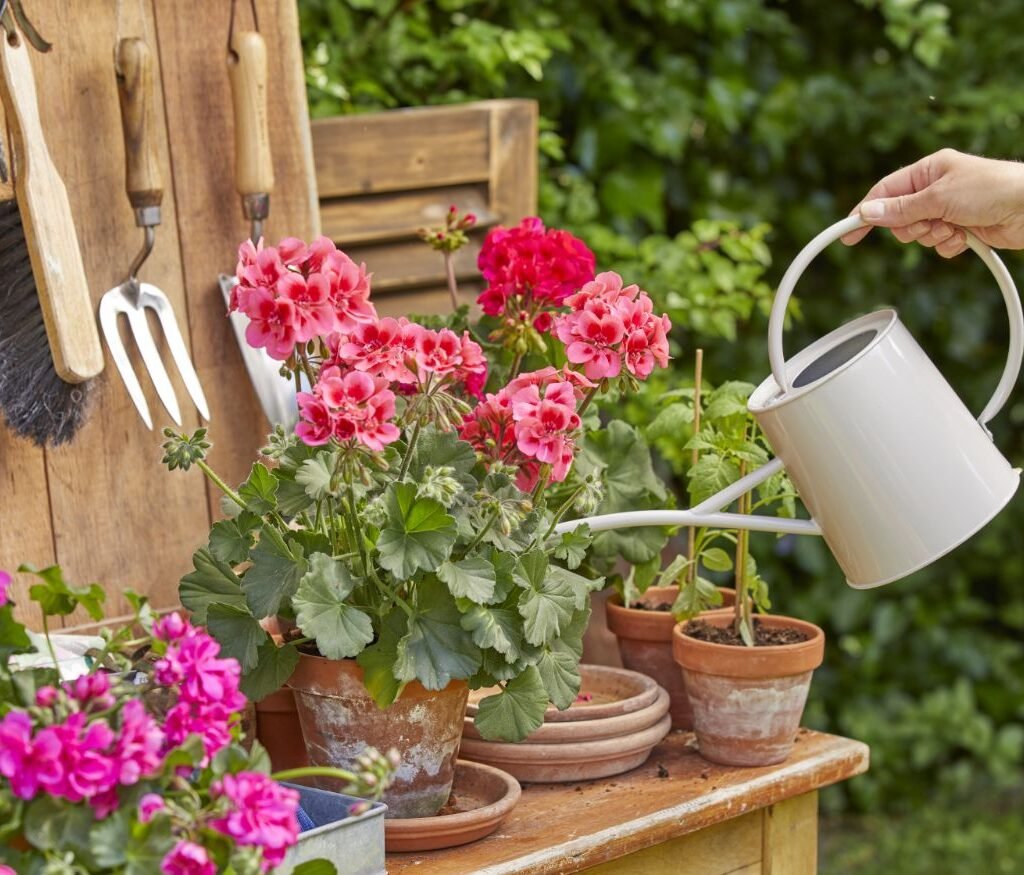
Understanding soil moisture is critical for applying the deep watering trick effectively.
Soil Test Methods
- Finger Test: Insert a finger 1–2 inches into the soil. If it feels dry, it’s time to water.
- Moisture Meter: For precise monitoring, a moisture meter can indicate when soil is dry or moist.
- Observation: Wilting leaves in the morning or drooping stems indicate stress from insufficient water.
Tip: Avoid watering on a fixed schedule; instead, water based on soil and plant needs, especially during heat waves.
4. Mulching to Retain Moisture
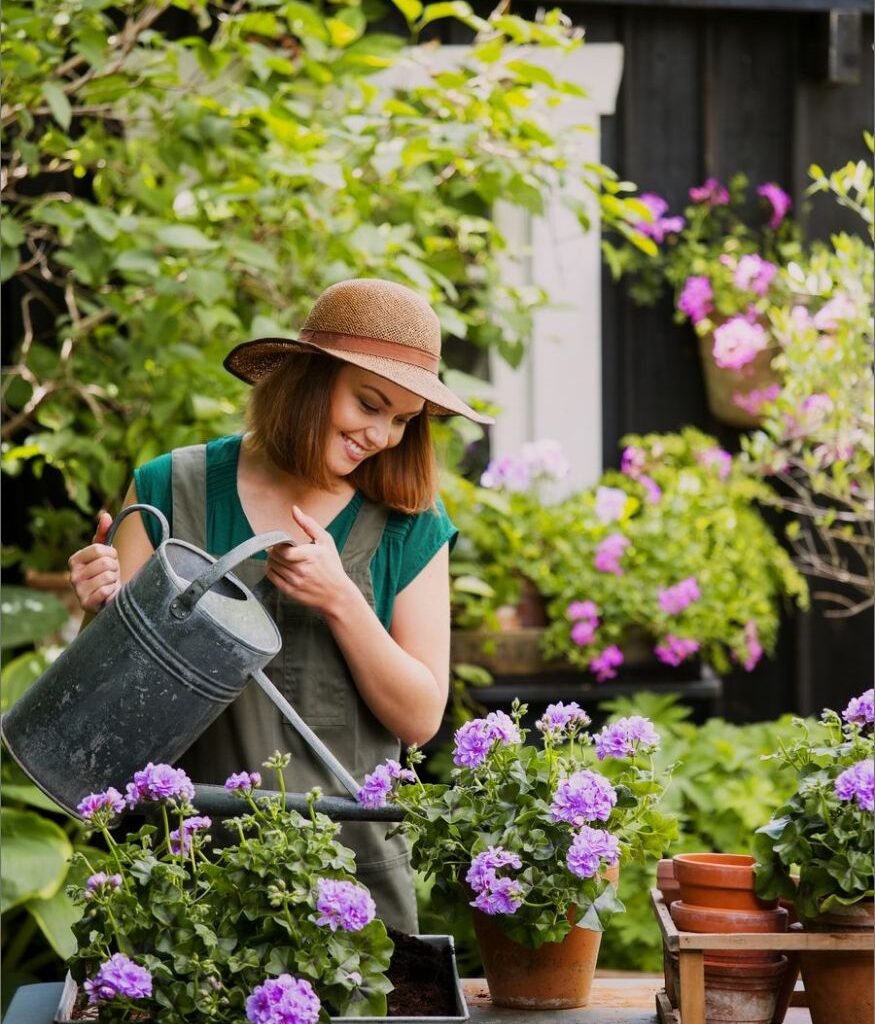
Mulching complements the deep watering trick by reducing water loss and protecting roots.
Benefits of Mulch
- Retains soil moisture, reducing the need for frequent watering.
- Keeps soil temperature lower during hot afternoons.
- Suppresses weeds that compete for water.
Recommended Mulches
- Organic Mulches: Shredded bark, straw, or compost improve soil structure as they decompose.
- Inorganic Mulches: Pebbles or gravel can help retain moisture and reflect heat away from roots.
Tip: Apply a 2–3 inch layer of mulch around the base of geraniums, keeping it slightly away from the crown to prevent rot.
5. Container Geraniums Require Extra Attention
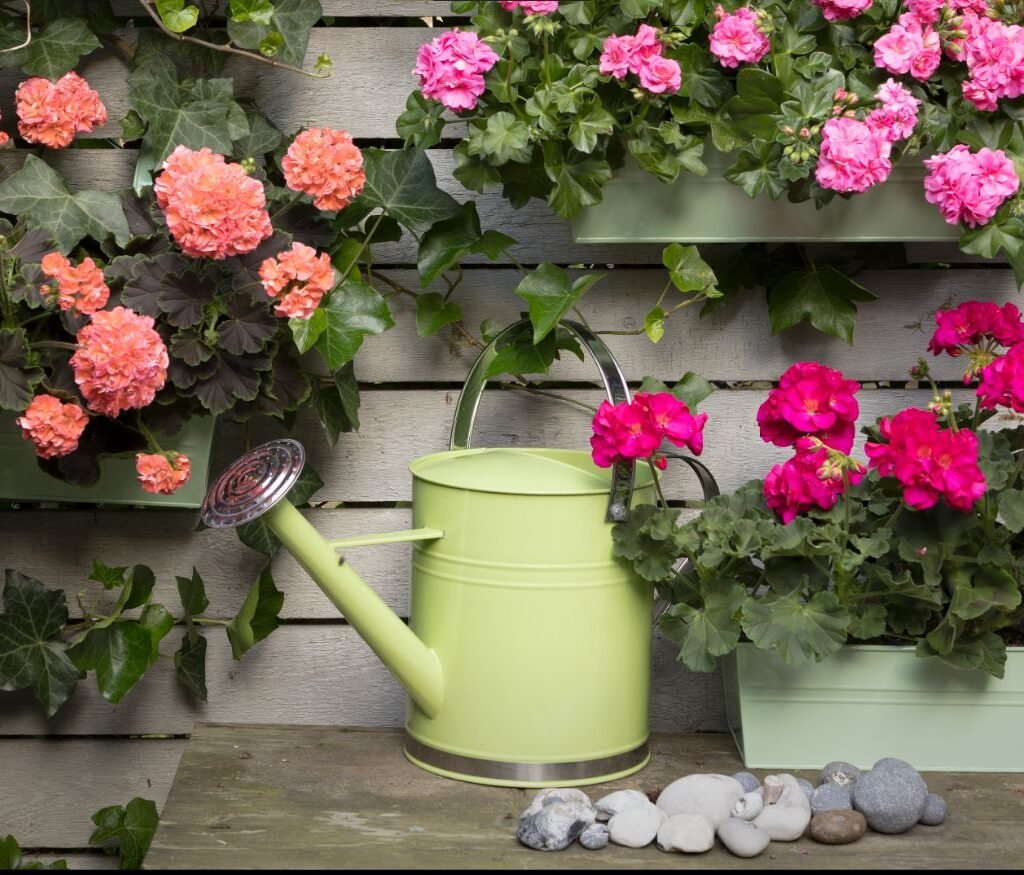
Geraniums in pots or hanging baskets are more susceptible to heat stress because soil in containers dries faster.
Container Watering Tips
- Use pots with drainage holes to prevent waterlogging.
- Choose thicker containers or use double pots to insulate roots.
- Check container soil daily during heat waves; smaller pots may need daily deep watering.
- Consider using a self-watering container or adding a layer of water-absorbing crystals to prolong moisture availability.
Tip: Container geraniums may need more frequent but controlled deep watering than garden beds to prevent wilting.
6. Adjusting Watering for Blooming Stages
Geraniums have different water requirements depending on their growth stage:
- Newly Planted Geraniums: Keep soil consistently moist until roots establish.
- Vegetative Growth: Deep watering once or twice a week encourages strong root development.
- Flowering Stage: Provide water when soil feels dry, and fertilize simultaneously to boost blooms.
Tip: Monitor the soil and adapt watering based on temperature, humidity, and plant size.
7. Enhancing Watering With Fertilization
Watering and fertilization work hand in hand for healthy, heat-resistant geraniums.
Fertilizer Tips
- Use a balanced, water-soluble fertilizer every 2–3 weeks during peak bloom.
- Fertilize after watering to prevent fertilizer burn on dry roots.
- Consider homemade fertilizers such as compost tea or diluted fish emulsion for nutrient boost.
Tip: Well-watered, fertilized geraniums maintain lush foliage and more vibrant flowers throughout the hot season.
8. Common Watering Mistakes to Avoid
Even experienced gardeners can make errors that stress geraniums during heat:
- Frequent Shallow Watering: Encourages weak, shallow roots and reduces drought tolerance.
- Overwatering: Leads to root rot, yellowing leaves, and fungal diseases.
- Watering Late in the Day: Leaves remain wet overnight, promoting mildew and leaf spotting.
- Ignoring Soil Type: Sandy soils drain quickly, requiring slightly more frequent watering than clay or loamy soils.
Tip: The deep, morning watering method minimizes these risks while optimizing bloom production.
9. Additional Tips for Heat-Resilient Geraniums
- Deadhead Regularly: Removing spent blooms encourages continuous flowering.
- Prune Leggy Stems: Promotes bushier growth and more flower clusters.
- Provide Partial Shade: During extreme heat waves, light afternoon shade prevents leaf scorch.
- Monitor for Pests: Aphids, whiteflies, and spider mites thrive in hot conditions. Treat early to reduce stress on plants.
Tip: Combining strategic watering with general plant care ensures long-lasting blooms even in peak heat.
10. Sustainable Watering Techniques
For environmentally conscious gardeners, sustainability can be integrated into the watering strategy:
- Rainwater Harvesting: Collect rainwater to water geraniums, reducing tap water usage.
- Drip Irrigation: Delivers water directly to roots, minimizing evaporation.
- Watering Cans vs. Sprinklers: Targeted watering conserves water and prevents foliage wetting.
Tip: Sustainable practices not only conserve resources but also promote healthier, stress-resistant plants.
Conclusion
Geraniums are resilient, colorful additions to any garden, but heat stress can severely impact their blooms and overall health. The secret to keeping them thriving lies in a deep, morning watering routine that encourages strong roots, reduces heat stress, and maximizes flower production. Complementing this strategy with mulching, proper fertilization, deadheading, and pest management ensures that geraniums remain lush, vibrant, and flowering nonstop throughout the hot months.
By understanding geranium water needs, adjusting for containers, monitoring soil moisture, and protecting plants from extreme heat, gardeners can enjoy a blooming paradise even during the hottest summer days. With the right care, your geraniums will not only survive heat but flourish and provide long-lasting beauty in your garden.
Tip: Think of watering as a strategic tool—applied correctly, it’s the secret that transforms ordinary geraniums into show-stopping, heat-tolerant garden stars.
